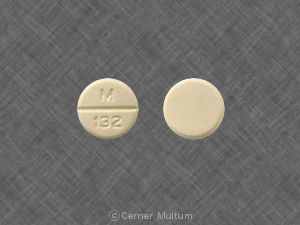 What is Nadolol?
What is Nadolol?
Nadolol is in a group of drugs called beta-blockers. Beta-blockers affect the heart and circulation (blood flow through arteries and veins).
Nadolol is used to treat angina (chest pain) or hypertension (high blood pressure).
Nadolol may also be used for other purposes not listed in this medication guide.
What is the most important information I should know about Nadolol?
Do not stop taking nadolol without first talking to your doctor. Stopping suddenly may make your condition worse.
If you need surgery, tell the surgeon ahead of time that you are using nadolol. You may need to stop using the medicine for a short time.
Nadolol may impair your thinking or reactions. Be careful if you drive or do anything that requires you to be alert.
Keep using this medicine as directed, even if you feel well. High blood pressure often has no symptoms. You may need to use blood pressure medication for the rest of your life.
Nadolol is only part of a complete program of treatment for hypertension that may also include diet, exercise, and weight control. Follow your diet, medication, and exercise routines very closely if you are being treated for hypertension.
What should I discuss with my healthcare provider before taking Nadolol?
You should not take nadolol if you are allergic to it, or if you have:
- asthma or chronic obstructive pulmonary disease (COPD
- certain serious heart conditions such as”AV block” or slow heart rhythm; or
- conditions that cause very low blood pressure
If you have any of these other conditions, you may need a nadolol dose adjustment or special tests:
- bronchitis, emphysema, sleep apnea, or other breathing problem
- congestive heart failure
- liver or kidney disease
- diabetes
- a thyroid disorder; or
- pheochromocytoma (tumor of the adrenal gland)
FDA pregnancy category C. It is not known whether nadolol will harm an unborn baby. Nadolol may cause heart or lung problems in a newborn if the mother takes the medication during pregnancy. Tell your doctor if you are pregnant or plan to become pregnant while using this medication.
Nadolol can pass into breast milk and may harm a nursing baby. You should not breast-feed while taking nadolol.
Nadolol Side Effects
What are the possible side effects of Nadolol?
Get emergency medical help if you have any of these signs of an allergic reaction: hives; difficulty breathing; swelling of your face, lips, tongue, or throat.
Call your doctor at once if you have a serious side effect such as:
- slow or uneven heartbeats
- numbness or cold feeling
- feeling like you might pass out
- feeling short of breath, even with mild exertion
- swelling or rapid weight gain
- bronchospasm (wheezing, chest tightness, trouble breathing)
- hallucinations, behavior changes; or
- nausea, upper stomach pain, itching, loss of appetite, dark urine, clay-colored stools, jaundice (yellowing of the skin or eyes)
Less serious side effects may include:
- dizziness, spinning sensation
- tired feeling
- mild nausea, diarrhea, constipation, upset stomach, bloating, gas; or
- tingly feeling
This is not a complete list of side effects and others may occur. Call your doctor for medical advice about side effects. You may report side effects to FDA at 1-800-FDA-1088.
Nadolol Interactions
What other drugs affect Nadolol?
Tell your doctor about all other medicines you use, especially:
- digoxin (digitalis, Lanoxin)
- a diuretic (water pill)
- insulin or oral diabetes medication; or
- reserpine
This list is not complete and other drugs may interact with nadolol. Tell your doctor about all medications you use. This includes prescription, over-the-counter, vitamin, and herbal products. Do not start a new medication without telling your doctor.
What should I avoid while taking Nadolol?
Nadolol may impair your thinking or reactions. Be careful if you drive or do anything that requires you to be alert.
Drinking alcohol can further lower your blood pressure and may increase certain side effects of nadolol.
Nadolol Dosage
How should I take Nadolol?
Take exactly as prescribed by your doctor. Do not take in larger or smaller amounts or for longer than recommended. Follow the directions on your prescription label.
Your doctor may occasionally change your dose to make sure you get the best results.
Your blood pressure will need to be checked often, and you may need other blood tests at your doctor’s office. Visit your doctor regularly.
Do not skip doses or stop taking nadolol without first talking to your doctor. Stopping suddenly may make your condition worse.
If you need surgery, tell the surgeon ahead of time that you are using nadolol. You may need to stop using the medicine for a short time.
Taking nadolol can make it harder for you to tell when your blood sugar is low. If you have diabetes, check your blood sugar regularly.
This medication can cause false results with certain lab tests of the urine. Tell any doctor who treats you that you are using nadolol.
Keep using this medicine as directed, even if you feel well. High blood pressure often has no symptoms. You may need to use blood pressure medication for the rest of your life.
Nadolol is only part of a complete program of treatment for hypertension that may also include diet, exercise, and weight control. Follow your diet, medication, and exercise routines very closely if you are being treated for hypertension.
Store at room temperature away from moisture, heat, and light.
What happens if I overdose on Nadolol?
Seek emergency medical attention or call the Poison Help line at 1-800-222-1222.
Overdose symptoms may include slow heart rate, extreme dizziness, or fainting.
What happens if I miss a dose of Nadolol?
Take the missed dose as soon as you remember. Skip the missed dose if your next dose is less than 8 hours away. Do not take extra medicine to make up the missed dose.
Sourced from everydayhealth.com
